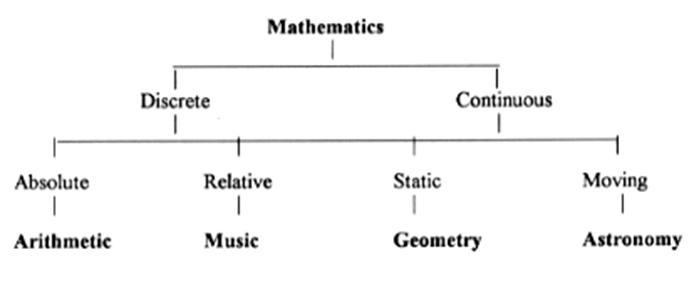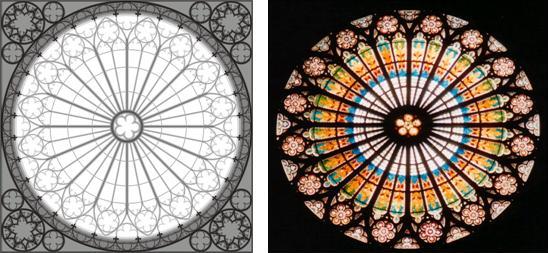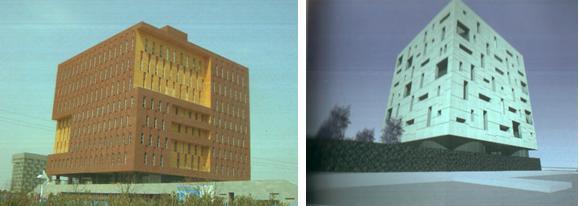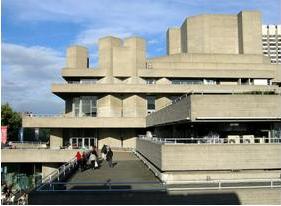by Antonio Caperna
Presented at UIA working program “Spiritual Places”, July 6th, 2007
Third International conference “Transmitting outspoken emotions” UIA WP Spiritual Places, Warsaw, Poland
Abstract
This paper start from two assumption:
1. the illuminist thought has represented a turning point in Western history, but its has “frozen” inside its “rational domain” part of our spirituality;
2. this cultural attitude is an intrinsic necessity that characterize the final time of culture, and we can read these aspect through the artistic, architectural, musical, etc. symbolism.
The built environment, with its geometrical symbolism, talks about the culture that has generate it, and express the intimate values of a culture. So, if in the past the built environment was interconnected with their physical and spiritual surrounding, the contemporary has express the excessive power of mechanical culture determining the loss of human identity in favour of “artificial identity”. This artificial structure has transferred its cultural reductionism also to urbanism and architecture caused laceration of society and deformation of ethical and esthetical values. This new design represent and symbolize new values like hedonism and a devoid sense of nothing, and are sculptural expression of a society.
I’ll demonstrate because this happen today, what we can learn from the past, and i propose a new approach, structured on holistic way and able to demonstrate that the science can and must married the beauty and spirituality.
“Let no one destitute of geometry enter my doors.” (Plato)
°°°°°
1. Classic culture and the intimate relationship between spirituality of Mathematics, and beauty in architecture
Historically, architecture was part of mathematics, and in many periods of the past, the two disciplines were indistinguishable (Salingaros,2006). In the ancient world, mathematicians were architects, whose constructions we marvel at today. The pyramids, for example, has been demonstrate that the Great Pyramid contents the Golden Ratio whatever that is, and then look at the claim that the Great Pyramid squares the circle, whatever that is. Again: If we take a cross-section through a pyramid we get a triangle. If the pyramid is the Great Pyramid, we get the so-called Egyptian Triangle. It is also called the Triangle of Price, and the Kepler triangle. This triangle is special because it supposedly contains the golden ratio. In particular, the ratio of the slant height s to half the base b is said to be the golden ratio.
In the same way in Classical Greece and ancient Rome, architects were required to also be mathematicians. In particular, we can remember the Pythagoreans adored numbers. Aristotle, in his Metaphysica, sums up the Pythagorean’s attitude towards numbers: “The (Pythagoreans were) … the first to take up mathematics … (and) thought its principles were the principles of all things. Since, of these principles, numbers … are the first, … in numbers they seemed to see many resemblances to things that exist … more than [just] air, fire and earth and water, (but things such as) justice, soul, reason, opportunity …”
This strong relationship between math, symbolism and spirituality has characterized also the great medieval cathedrals are a symbol of the Middle Ages.

The Quadrivium of knowledge
While speaking of groups of four, we owe another one to the Pythagoreans, the division of mathematics into four groups, giving the famous Quadrivium of knowledge, the four subjects needed for a bachelor’s degree in the Middle Ages. (Source: Squaring the Circle. Geometry in Art & Architecture, by Paul Calter)
The medieval culture was, essentially, agricultural era. In that time and, more generally, in this cultural and psychological contest the agriculturist considered the earth as “Gaia” or our mother. The relationship between this man and the his world is something full of passion and sacredness: his home, his ploughed field, his progeny. In this time the city/village is connected, psychically and emotionally, with the country; country that is around the village and inside it: they form a psychically and physically wholeness.
Even though many people think the middle age as a time without mathematics, now we can say that their math has been wrote in the architecture; we can see these symbols into nearly aspect of cathedral design: the numbers of the pillars, the choir and layout of the façade, until, inevitably, to the division of the rose windows. All this geometrical elements describe a metaphysical significance that every men can read and understand. This great structure wants to transmit the divine power, the transcendence through the beauty of the stone and environment contained in it. Janson writes, “. . . the new spirit that strikes us at St. Denis is the emphasis on strict geometric planning and the quest for luminosity”. And Janson here paraphrases Abbot Sugar, who commissioned the work. “Harmony (that is the perfect relationship among parts in terms of mathematical proportions or ratios) is the source of all beauty, since it exemplifies the laws according to which divine reason has created the universe.”
The general cultural movement of the renaissance in Italy and than in the rest of Europe, had a profound impact also on the mathematics of the time.
The Renaissance saw a resurgence of Roman design and with it, Greek and Roman humanism. Leonardo da Vinci, Albrecht Düerer and others offered intensely detailed descriptions of the human form, proposing new interrelationships between the circle, square, and human body. During this period the Golden Proportion was understood to a much greater extent (due to the work of Fibonacci); Leonardo da Vinci and Düerer, in their Vitruvian illustrations, depicted a man who was halved at the crotch, two being the number of sexuality, of propagation of life.
The works of Plato and Pythagoras, among others, gave three sets of sequences that were of crucial importance to geometry, arithmetic, and, much later, Renaissance architectural theory.
They were:
arithmetic sequence 1, 2, 3, 4, …
geometric sequence 1, 2, 4, 8, …
harmonic sequence 3, 6, 12, 24, …
Andrea Palladio, in his Four Books on Architecture, proposed the use of these sequences for room dimensions, especially the relation of height to width and length. In the same way we must remember Leon Battista Alberti and his ideal of beauty based on human proportion and harmony.
Alberti regarded mathematics as the common ground of art and the sciences wrote, in his treatise, Della pittura (On Painting): “To make clear my exposition in writing this brief commentary on painting I will take first from the mathematicians those things with which my subject is concerned.” In both Della pittura and De statua, a short treatise on sculpture, Alberti stressed that “all steps of learning should be sought from nature.” The ultimate aim of an artist is to emulate nature. The work of art is, according to Alberti, so constructed that it is impossible to take anything away from it or add anything to it, without impairing the beauty of the whole. Beauty was for Alberti “the harmony of all parts in relation to one another,” and subsequently “this concord is realized in a particular number, proportion, and arrangement demanded by harmony”.

Architectural drawing of the rose window of Strasbourg Cathedral, France.
According to Painton Cowan, Rose windows use geometry in three different ways; manifest, that which makes the most immediate impact on the eye, hidden, the secret geometry of the relationships and proportions of the parts, and finally symbolic, a kind of shorthand, where geometric figures represent mystic values.
2. The change of paradigm: from classical to mechanical vision of the world
The Cartesian approach has represented the break point from two paradigms: from a classical to a mechanical vision of the world. This passage is essential elements to understand the cultural transformation of XX century.
But what are the essential elements of Cartesian approach? Many authors have described the Cartesian vision of the world as machine, and where everything could be exactly measured through the scientific way. The Cartesian’s paradigm feature:
– that in any complex phenomenon, the dynamics of the whole could be understood from the properties of the parts;
– based on the belief that scientific knowledge could achieve absolute and final certainty;
– it was thought that there were fundamental structures and then there were forces and mechanisms through which these interacted thus giving rise to processes;
– Scientific descriptions were believed to be objective, independent of the human observer and the process of knowledge
If, on one side this has produced great results, on the other side it has represented the crisis of humanistic culture. So, what the contemporary mean and in which feature characterize it? Which the role of architecture and architect?
As said above, I’d like to answers to this question through aesthetic dimension and the symbolic aspect of the contemporary culture.
The first question, or what the contemporary mean. According to Spengler, we can answer to this question asserting that the contemporary is the last leg of a culture; it symbolize the destiny of any culture around the time. This historical time is characterized by strong transformation in different fields: arts, politics, economy, and, of course, in architecture. We must take in account the strong relationship from this different but connected fields: all together forms a cultural corpus of a era. Which are this elements that are also typical characteristic of our world?
From an artistic point of view, this era is characterized for the destruction of aesthetic. So, from Duchamp that destroyed the esthetic value through the anti-esthetic value we have had an exponential grow of something that the French philosopher Jean Braudillard has definite aestheticism fashion or rather the representation of the nothing (Braudillard, 2000). According to Braudillard we can find this aspect not only in the art but also in politic, when the behavior and the structure are impregnate of aestheticism fashion. All this aspect generate a sort of industrial culture, something that is more close to a technical value and not a poetic value. In this sense Braudillard talk about an aestheticism fashion that has lose its intimate secret.
In this transformation of the nullity in cultural value the media have had an enormous responsibility. A clear representation of this cultural decadence and kill of the spirit we can read watching the TV. We witness every day how different aspect of the nullity are transformed in value: ignorance and rudeness how originality; vulgarity how new form of expression. The true is that the physical and moral tiredness of our world, cause a gradual impoverishment of ideas, an infinite repetition of the same things (look at the fashion).
From this became clear another point of this decadence: the loss of the feel with the magic, the sense of the mysticism (Caperna, 2002); this elements are fundamental aspect of the aesthetic value. So the loss of this spiritual components produce and cause the transformation of the nullity in something of new and “original”(Caperna, 2003). In other words transform the aesthetic in emptiness aesthetic. As seen above these aspect of aesthetic of contemporary are clear sign of a dying civilization.
Again, an another aspect is characterized by strong organization based on the power of economy, financial markets, and technology; this “cultural transformation” determine the success of money as absolute and artificial value, and the died of a psychological relation from the men and their natural environment (Caperna, 2002). The environment is something to conquer and urban areas became a body completely separated from the natural environment: they grow until became cosmopolis (Caperna, 2003), or devouring energy. In the same time we assist to another deep-rooted transformation: few enormous towns that become cultural and financial centers of the planet. “these cities now function in four new ways: first, as highly concentrated command points in the organization of world economy; second, as key location for finance and for specialized service firms, which have replaced manufacturing as the leading economic sectors; third, as sites of production, including the production of innovations, in these leading industries; and, fourth, as markets for the products and innovations produced. These changes in the functioning of the cities have had a massive impact upon both international economic activity and urban form: cities concentrate control over vast resources, while finance and specialized service industries have restructured the urban social and economic order. Thus a new type of city has appared. It’s the global city. Leading examples now are New York, Tokyo, Frankfurt or London” (Sassen S., 2001). These events has transformed also the relation between these cities and their surrounding: this environment politically to have to be read as global city, provinces and lesser States.
In order to understand how there has been parallel change in these cities that have had different history, well I think that this is connected with the cultural triumph of the Western over other cultural models. This process has had an exponential grow after the collapse of the socialist regimes and the rise of the digital technology, and with this last one the role of communications in terms of democracy, relation inside the society and from it and the Governments.
3. What do beauty and spirituality mean today?
As demonstrate above, the beauty, in its general aspect, is something joined to the cultural structure of a society. It represent body and soul of a culture. The preponderant strength of mechanical culture has determinate the loss of human identity in favour of “artificial identity”. This artificial structure has transfer its cultural reductionism also to urbanism and architecture (Salingaros, 2005). This general impoverishment of culture, united to geometrical impoverishment in urban and architectural structure has produced laceration of society and deformation of ethical and esthetical values. We can read this events through this leveling of culture; everywhere in the world we can find the same movie, the same structure with glass and steel, the same urban typology without respect for traditions and local roots. It’s clear that this standardization through the financial and economical markets has attacked the architectural culture destroyed its intimate values, and quasi destroyed the ethical and mythical nucleolus of it. So, if in the past the beauty has been characterized by strong attention of human need, and by symbolic values able to married human and natural environment, today we have new values, connected with the artificial structure that has transformed architectural works in a sort of hedonistic delirious. Many contemporary buildings don’ have relation with the (human and built) environment. Herald Szeemann talked about “single machine”, something not able to marry the context; this machines exist in itself, and appear as a form of hedonism without vitality.
I talk about a form of archite-cultural impotence. In its whole, our culture don’t have a definite style and an exact idea about the beauty; it is just able to adopt a continuously and lunatic approach without feeling for the human beings. As wrote above, the living/organic grows disappear in favour of an inorganic morphology characterized by artificial and arranged in echelon structure, symbolic representation of loss of soul (Caperna, 2003). In this time the men consider the country as something of alien and inside them there is no place for sacredness: the men are a sort of intellectual nomadic.
I don’t suggest to come back to the paste. It is clear that this should be ant historic and we can’t be able to reply that beauty and that spirituality. It doesn’t belongs to us because we have another soul. The challenge for our future is to develop a new philosophical approach able to redevelop our culture and our relation with that is around us. I think that new philosophical approach derived from complexity is showing its capability to furnish a new culture for our world. Today we can discovery, develop and increase old philosophical approach in a new way. Beauty and spirituality are part of World as wholeness

Library Zhenjiang, China Arata Isozaki, Residential building

Royal National Theatre, London, Denys Lasdun
4. Conclusion: what is the role for urban design and architecture?
In short, I consider our time as a transition era. In this time, as wrote above, we have loss the sacredness and, with it, the beauty as fragment of Divine. In this sense I have demonstrate different aspect derivate from this cultural decline.
My look at the history or philosophy don’t mean I want replace the past, but just to understand this phenomenons and from them to find a key able to search and promote a new “rebirth”. So, according to Spengler, if a culture express itself trough symbols (as art, architecture, politic, etc.), we can analyze the symbols of our time: general grow of expansion forces; in its general aspect this mean that the forces during decadence times, are usually characterized by expansion processes. We must mention the grown of city to megalopolis, or the economical and financial expansion;
loss of sacredness in favor of mechanical forms derived from a linear science inorganic grow (social, cultural and physical) that has find out its representation trough the modernist neighborhoods domination of the money as abstract concept; an example is represented from the fact that we can study the Greek without to know their economy, whereas we can’t understand the Roman world without to know their economy or reverence to the Law.
All this symbols represent signs of decadence. If this analysis is right, what can we propose? I’d like to propose few cultural rules as answer to the question illustrate above:
- Paradigm jump; from the Cartesian culture to the Holistic approach. We must to redesign the architecture didactic integrating mathematics in architecture design curricula.
- The purpose of architecture must be to create a human environment for human beings.
- Understanding the necessity of geometric coherence in urban spaces. We must analyze the city as a complex interacting systems. According to several authors (Alexander, Salingaros,) the harmony between urban spaces and human beings (socially and psychologically) derive from the coherent interaction of its several parts and, in this sense, the geometry can play not only a physical role, but also a symbolic role. Every great architectural work is characterized by tension between order and chaos combining simplicity and complexity; as wrote by Novalis “in every work of art, the chaos must to shine trough a veil of order”.
- According to Christopher Alexander and Nikos Salingaros urbanism consists of social and psychological processes that depend critically upon a geometric rubric (Alexander et. al., 1977; Alexander, 2004); in this sense, geometry is the core of all urbanism.
The idea to translate new mathematical principles into architecture and urbanism is a challenge to create a new approach and a new architectural languages. The complete failure of modernist architecture, new challenges derivate from new sensitiveness like physical and social sustainability and the digital revolution ask a new methodological approach able to merge several fields of knowledge into a synergic action. Especially the challenge derivate from the information communication technology (ICT) ask a new philosophical approach. Today we talk about the primary role of (digital) information and the different role of space and time in urban environment; or new relation from local and global. The questions are several: how we translate in architectural works this new structures? How we decline the relation/interrelation from real and virtual environment?
Certainly we can’t to use again the Cartesian thought: it’s unthinkable to use old paradigm over a new socio-cultural structure. As architect, I think we can’t afford to abdicate one’s duty, as happened in the past.
I conclude this paper using Alexander’s words: “In the past century, architecture has always been a minor science – if it has been a science at all. Present day architects who want to be scientific, try to incorporate the ideas of physics, psychology, anthropology . . . in their work . . . in the hope of keeping in tune with the “scientific” times. I believe we are on the threshold of a new era, when this relation between architecture and the physical sciences may be reversed – when the proper understanding of the deep questions of space, as they are embodied in architecture . . . will play a revolutionary role in the way we see the world . . . and will perhaps play the role for the world view of the 21st and 22nd centuries, that physics has played in shaping the world view of the 19th and 20th.”
References
Sassen S., The global city: New York, London, Tokyo, Princeton University Press, 2001
de Botton Alain, The architecture of happeness, Hamish Hamilton Ltd, 2006
Salingaros N.A., “Principles of Urban structure”, Techne Press, Amsterdam, Holland, 2005.
Salingaros Nikos A, “Anti-architecture and deconstrution”, Umbau-Verlag, Solingen, Germany, 2004
Salingaros N.A., “A Theory of architecture”, Umbau-Verlag, Solingen, Germany, 2006
Nouvel J., Baudrillard J., Les objects singuliers. Architecture et philosophie, Calmann-Levy, Paris, 2000
Caperna A., “ICT per un progetto urbano sostenibile”, Università Roma Tre, www.Tesionline.com , Rome 2005
Caperna A., “Introduction to the Pattern Language”, Università Roma Tre, www.tipus.uniroma3.it , Rome 2001
Antonio Caperna and Nikos A. Salingaros, ” (2006), “La complessità come nuovo approccio metodologico alla progettazione urbane e architettonica”, Convegno Nazionale INU “Urbanistica e Architettura”, Genova 22-23 giungo 2006″.
Caperna A. (2002), “Pattern Language come forma di espressione organica” in Giangrande A., Mortola E. (a cura di), “Architettura, Comunità e Partecipazione”, Aracne Editrice, Roma.
Caperna A. (2003), “Il linguaggio delle opere architettoniche contemporanee”, Roma. Available online: www.biourbanistica.it
Spengler O., The Decline of the West, by Oxford University Press Inc, USA, 1991. [Der Untergang des Abendlandes. Umrisse einer Morphologie der Weltgeschichte, Band 1, Wien 1918, Band 2, München 1922]
Alexander C., S. Ishikawa, M. Silverstein, M. Jacobson, I. Fiksdahl-King & S. Angel (1977) A Pattern Language, Oxford University Press, New York.
Alexander C. (2004) The Nature of Order, Books 1-4, The Center for Environmental Structure, Berkeley, California.
Krier L. (1998) Architecture: Choice or Fate, Andreas Papadakis, Windsor, England.
Sternhell L., Les anti Lumières, Librarie Artheme Fayard, 2006
Alberti L.B., De re ædificatoria
Palladio A., I Quattro Libri dell’ Architettura (The Four Books of Architecture)
Vitruvio, De Architectura
Summerson J., (1970). Il linguaggio classico dell’Architettura, Einaudi – Torino
De Angelis D’Ossat, G. (1958). Enunciati euclidei e divina proporzione nell’architettura del Primo Rinascimento. Mondo Antico/Arte II, Firenze.
Hildner, J. (1999). Remembering the Mathematics of the Ideal Villa. Journal of Architectural Education, The MIT Press, Vol. 52, Issue 3, February, pp. 143-62.
Livio, M. (2003). La sezione aurea. Storia di un mistero che dura da tremila anni. Rizzoli